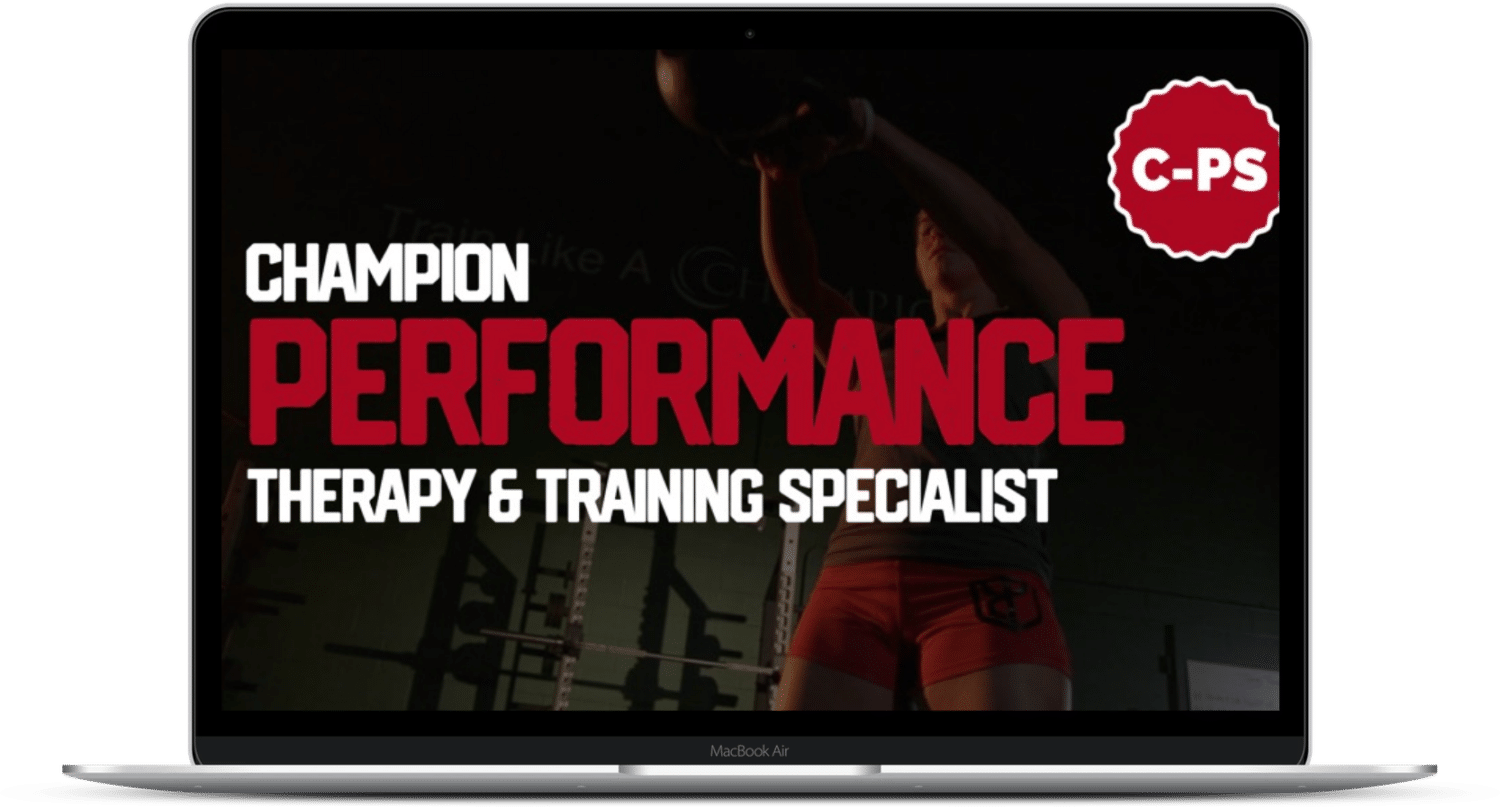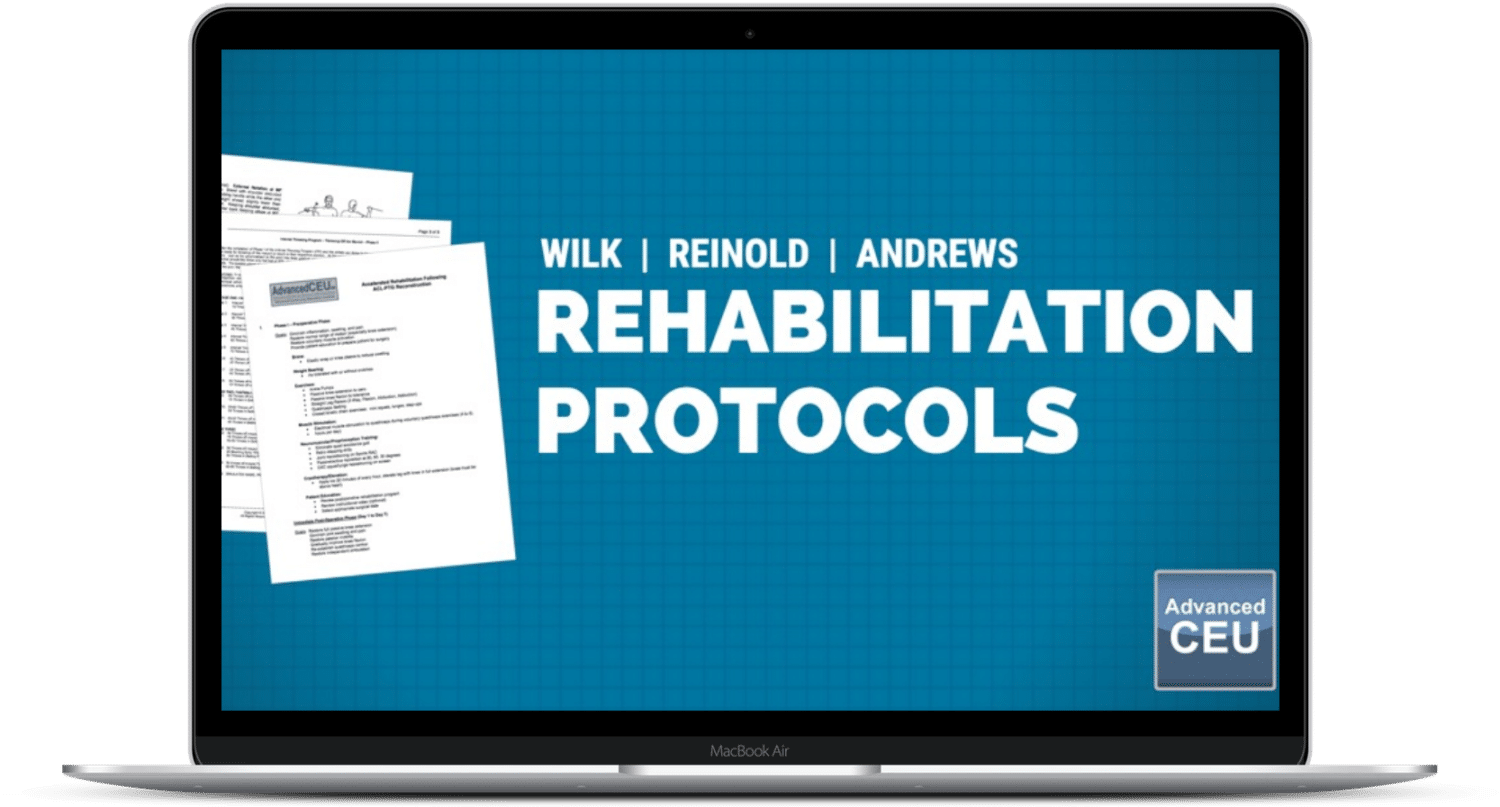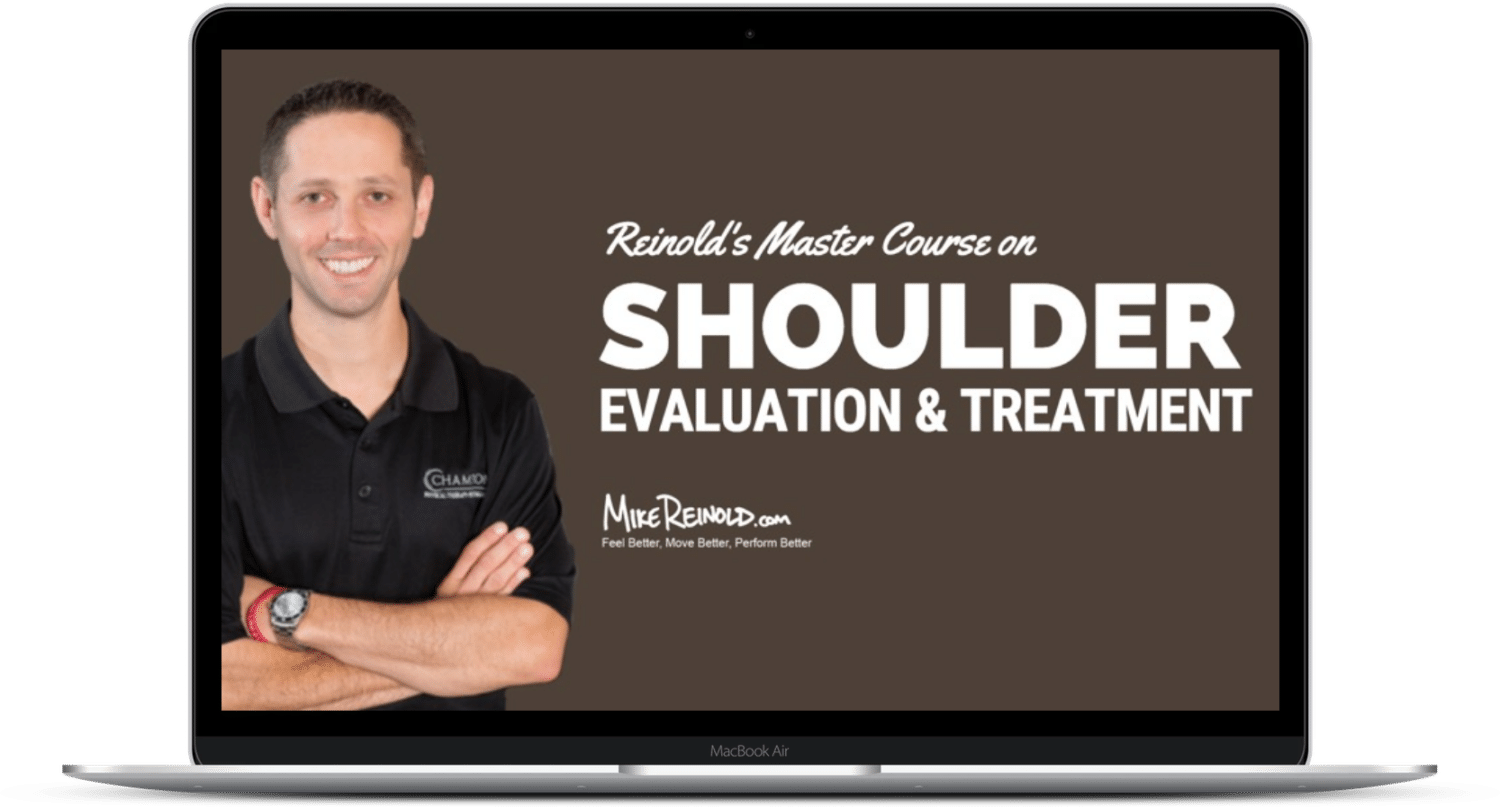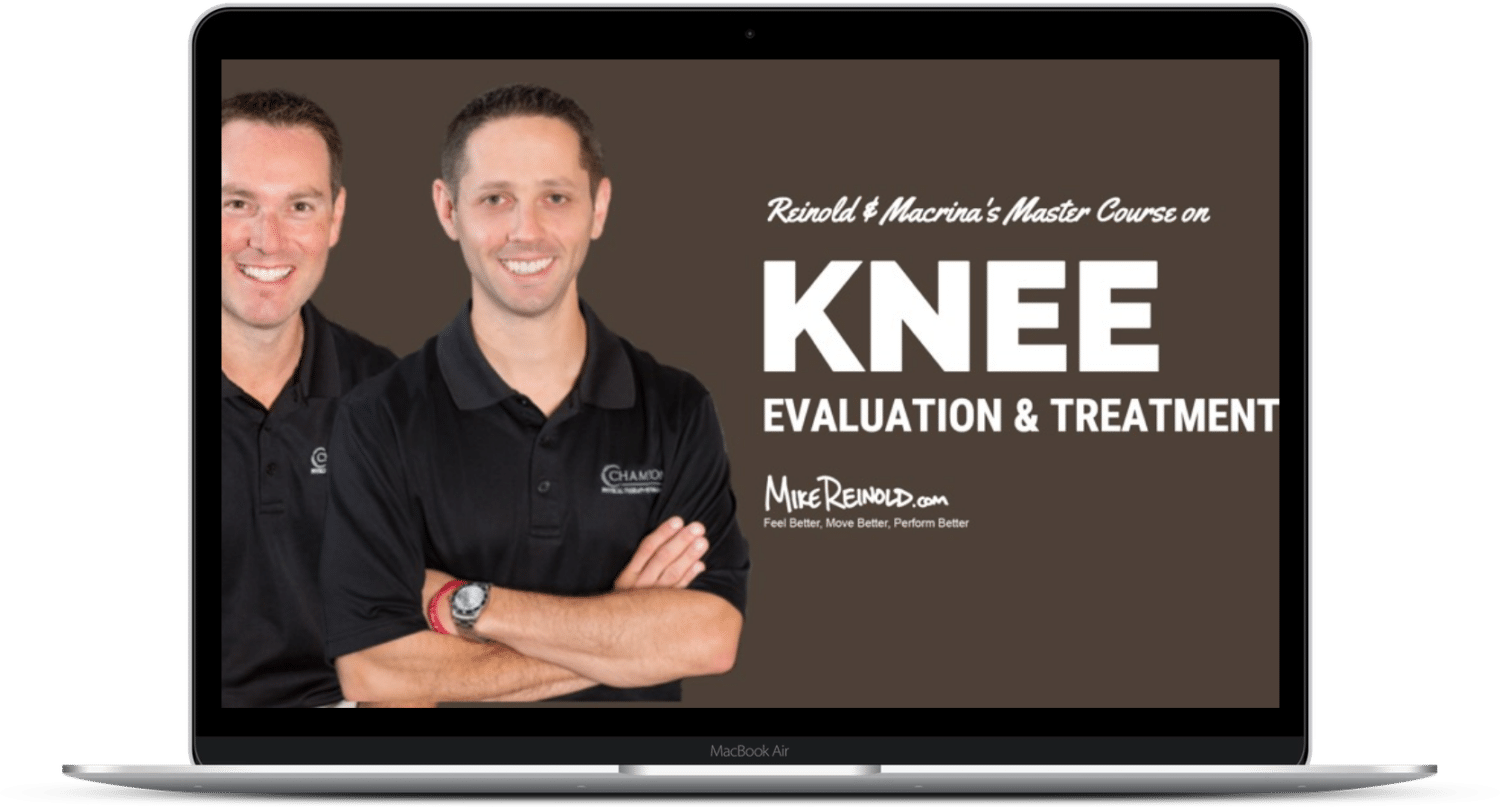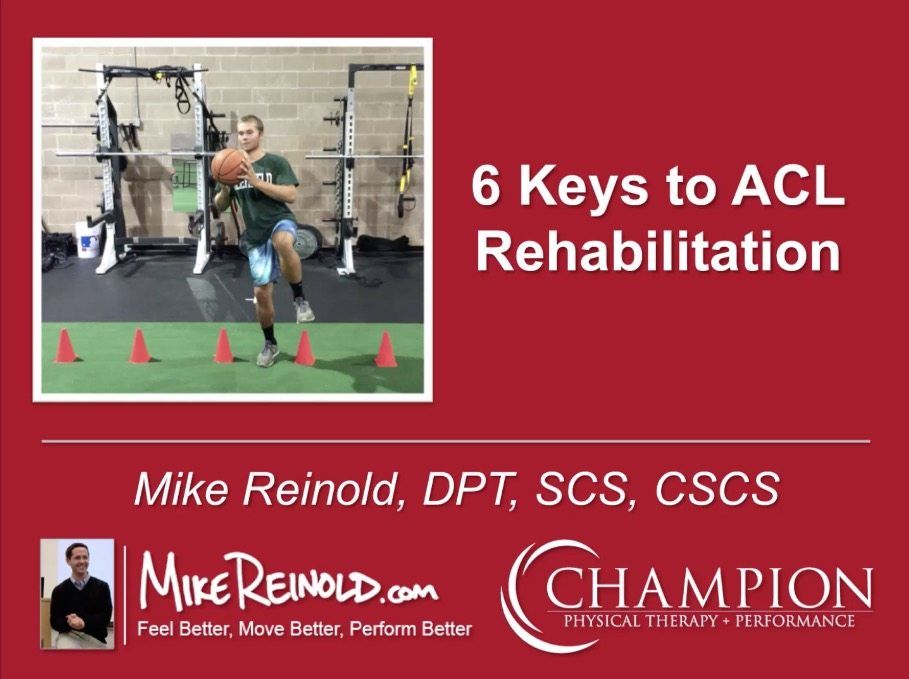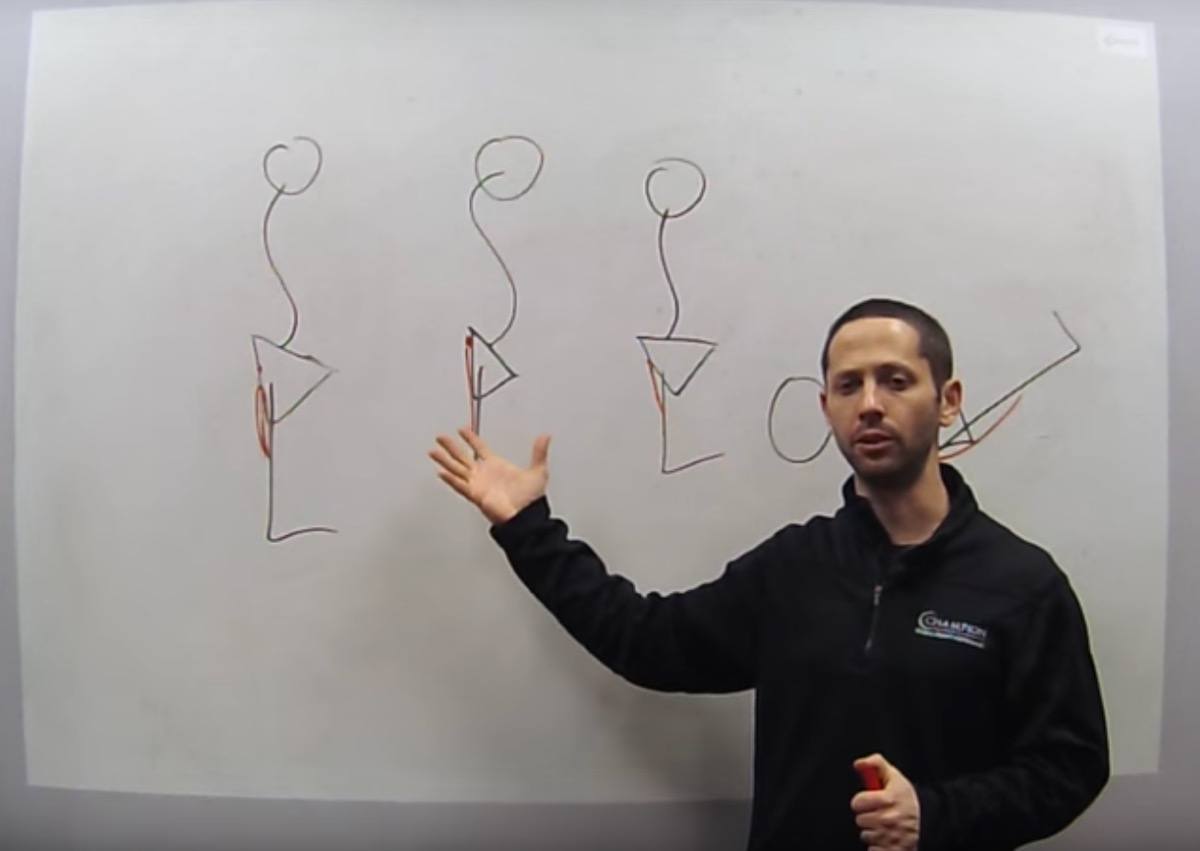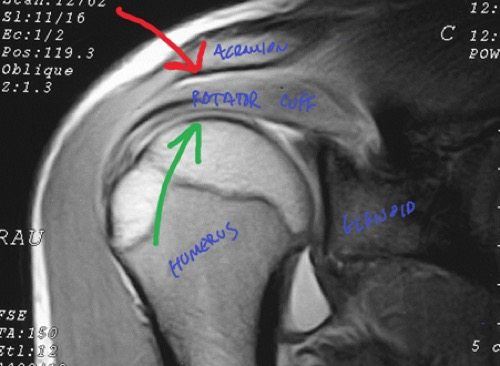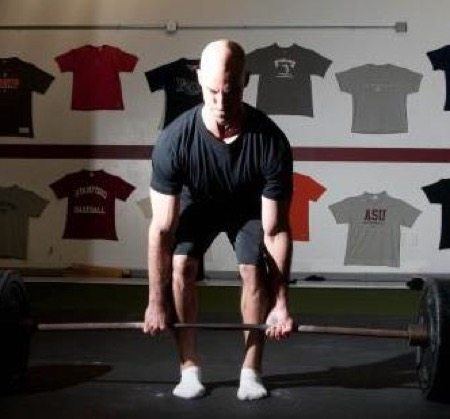
ACL Reconstruction Rehabilitation Protocol
Rehabilitation following Anterior Cruciate Ligament Reconstruction (ACL) continues to be a exciting and popular topic in orthopedics and sports medicine. Just pick up any journal and you are bound to find at least one article on the ACL in each issue! Over the past decade, Kevin Wilk, James Andrews, and I have continuously adapted and expanded our preferred treatment guidelines following ACL reconstruction. Kevin has published many classic manuscripts on the topic and we collectively have presented our treatment program several times in journal articles the last decade. Since these publications, Kevin and I have continued to advance our rehabilitation protocol. I am pleased to announce that we have officially just released our latest protocol for Accelerated Rehabilitation Following ACL Reconstruction with our latest protocols at RehabilitationProtocols.com. But because our ACL reconstruction rehabilitation protocol is one of our most popular, we simple want to give it away for free!

